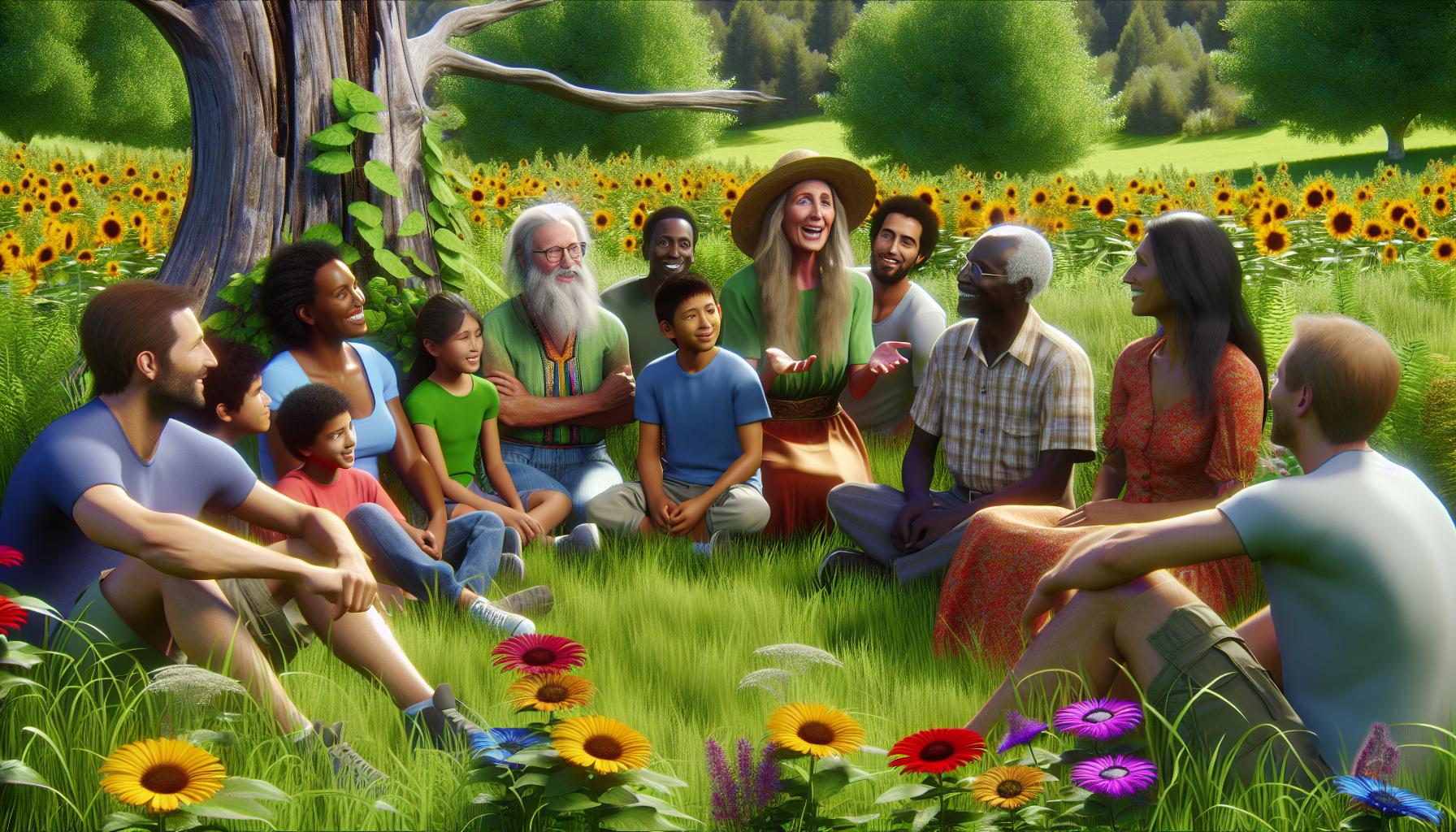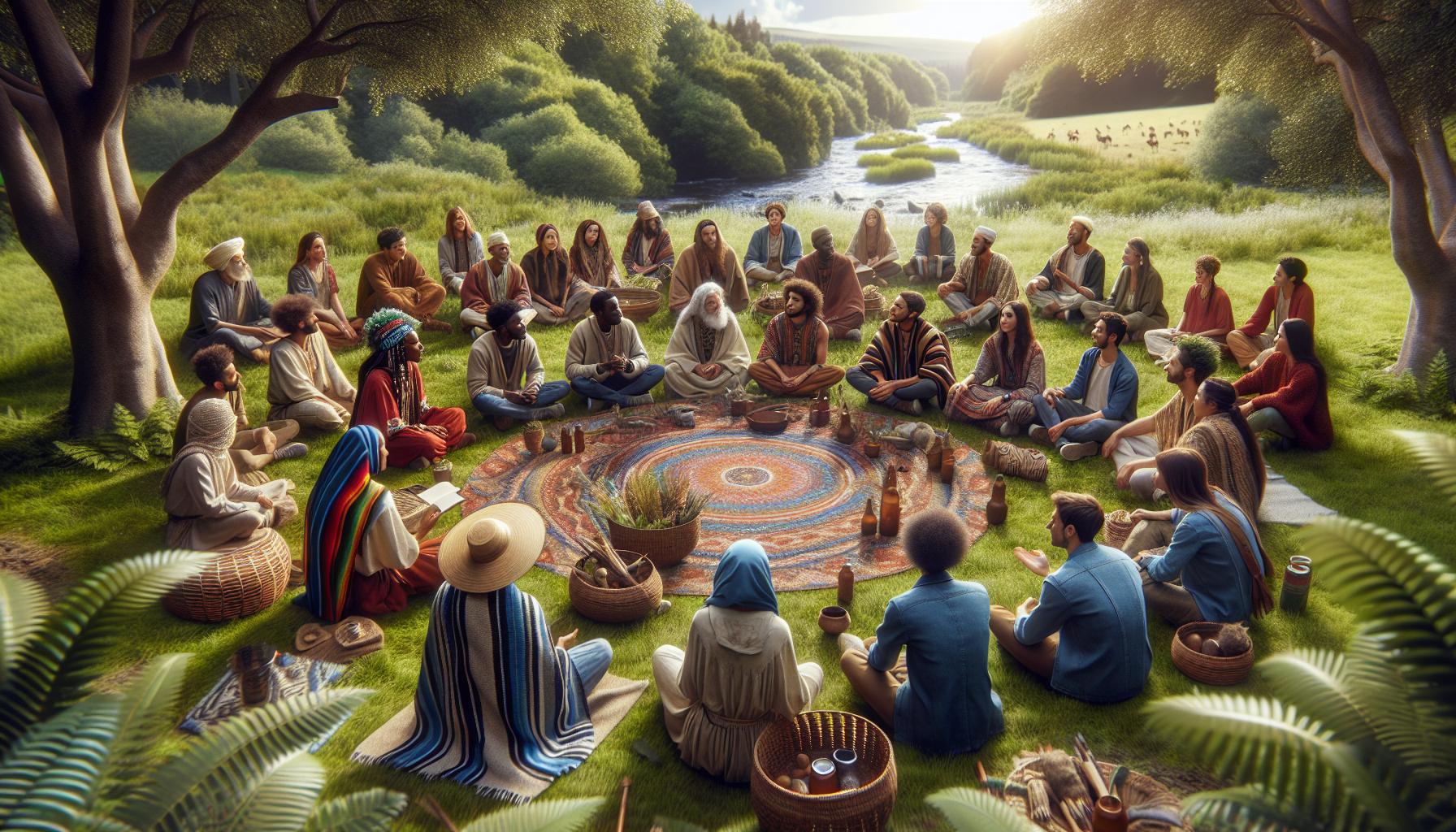In the vibrant world of Latin American folklore, few figures capture the imagination quite like Picchaloca. This enchanting character weaves a tale of mystery and mischief, often depicted as a spirited woman with a playful demeanor. Originating from the rich tapestry of Mexican culture, Picchaloca embodies the essence of the supernatural and the whimsical, making her a beloved figure in local legends.
As stories of Picchaloca spread, they reveal her dual nature—both a trickster and a protector. She’s known to engage with the natural world, often influencing the lives of those who cross her path. Exploring the legend of Picchaloca opens a window into the fascinating interplay of myth, culture, and community, inviting readers to delve deeper into a world where reality and fantasy intertwine seamlessly.
Picchaloca
Picchaloca is a prominent figure in Mexican folklore, recognized for her vibrant personality and complex nature. Characterized as a spirited woman, she embodies both mystery and mischief. Picchaloca acts as a trickster, employing wit and cleverness to navigate the challenges of life, often creating chaos while simultaneously imparting valuable lessons to those involved.
In addition to her mischievous side, Picchaloca serves as a protector of her community. She has a deep connection with the natural world, influencing the environment and the well-being of both people and animals. Her role emphasizes a balance between lightheartedness and responsibility, showcasing the interplay between fun and seriousness within cultural narratives.
The legend of Picchaloca resonates with themes of resilience and empowerment, inviting individuals to confront adversities while embracing their authentic selves. Her stories serve as a cultural bridge, connecting generations through shared experiences and values. Through the lens of Picchaloca, communities highlight the significance of folklore as a means of preserving traditions and fostering unity.
Origins and History

Picchaloca’s origins trace back to various indigenous cultures in Latin America, especially within Mexican folklore. This figure personifies a rich tapestry of traditions that merge history, mythology, and community values.
Cultural Significance
Picchaloca symbolizes duality within her character. She embodies both mischief and protection, reflecting the balance of life’s challenges. As a trickster, she encourages creativity and adaptability, showcasing the importance of resilience. Her stories often serve as cautionary tales, teaching vital lessons about consequences and community dynamics. Integrating Picchaloca into local traditions fosters unity, reinforcing cultural identity and continuity among generations.
Traditional Uses
Picchaloca has influenced numerous cultural practices. In festive celebrations, she often appears in folklore-based performances, where dancers enact her tales, bringing her character to life. Additionally, artisans incorporate her image into various crafts, such as pottery and textiles, enriching the cultural landscape. Rituals and storytelling sessions, especially during gatherings, frequently highlight her tales, facilitating connection within communities. These traditional uses underscore her ongoing impact on cultural expression and heritage preservation.
Benefits of Picchaloca

Picchaloca offers a range of benefits that enrich cultural understanding and personal well-being. Her stories and symbolism provide insights into health and mental wellness.
Health Advantages
Picchaloca’s narrative promotes a connection with nature, which plays a crucial role in physical health. Engaging with her tales inspires individuals to appreciate natural remedies and traditional healing practices. Communities often attribute healing qualities to the environment, leading to healthier lifestyles. Additionally, folklore surrounding Picchaloca encourages the consumption of locally sourced foods, bringing awareness to nutrition.
Mental Wellness
Picchaloca serves as a cultural icon for resilience and adaptability, offering mental wellness benefits. Her tales cultivate a sense of community, reducing feelings of isolation through shared storytelling experiences. Participation in folklore-related activities fosters creativity and emotional expression, contributing to an overall sense of well-being. Moreover, learning about her dual nature encourages individuals to navigate life’s complexities, promoting balanced perspectives and coping strategies.
How to Use Picchaloca

Picchaloca’s cultural narratives convey profound lessons and insights. Engaging with these stories and principles involves specific methods and recommendations for optimal enjoyment and benefit.
Preparation Methods
- Gather Materials: Collect items that represent Picchaloca’s essence, such as symbols of nature, woven crafts, or traditional dress. These items enhance the storytelling experience.
- Create the Setting: Choose a peaceful outdoor location or a communal space to reflect the connection with nature. Ensure the environment is conducive to sharing stories and fostering dialogue.
- Invite Participation: Encourage community members to join in the storytelling session. Their input and experiences enrich the narrative and make it more relatable.
- Use Visual Aids: Incorporate images, drawings, or crafts depicting Picchaloca. Visual elements help express her dual nature and facilitate deeper understanding.
- Engage with Nature: Include elements from the natural world, such as plants or stones, to emphasize the connection Picchaloca has with the environment. Utilize these items during storytelling to illustrate the lessons learned.
- Weekly Story Sessions: Conduct story-sharing circles once a week to maintain engagement with Picchaloca’s narratives. Frequent interactions enhance community bonding and cultural appreciation.
- Daily Reflections: Encourage individuals to reflect on Picchaloca’s lessons daily. Set aside time for personal contemplation or journaling about the connection with nature and life challenges.
- Monthly Cultural Activities: Organize monthly events celebrating Picchaloca through crafts, performances, or festivals. These gatherings promote cultural heritage and unity within the community.
- Seasonal Rituals: Implement seasonal changes aligned with nature and Picchaloca’s stories. Celebrate solstices or equinoxes with rituals that honor her significance, integrating storytelling into these traditions.
- Craft Creation: Encourage crafting sessions where community members create art inspired by Picchaloca. This hands-on approach allows for personal expression and connection to her narratives.
Potential Side Effects
Engaging with Picchaloca’s narratives may lead to several potential side effects, particularly in how individuals perceive their connection to culture and nature.
- Confusion: Encountering the dual nature of Picchaloca as a trickster and protector can create confusion. Individuals might struggle to reconcile the playful chaos she represents with the serious lessons taught through her stories.
- Overwhelming Emotions: Stories tied to Picchaloca can evoke strong emotional responses. This intensity may lead some individuals to feel overwhelmed, especially when confronting themes of loss, resilience, or community dynamics.
- Resistance to Lessons: Some may resist the cautionary aspects in Picchaloca’s tales. This resistance can manifest as a reluctance to accept the consequences highlighted in these narratives, impacting personal growth and reflection.
- Cultural Misinterpretation: Those unfamiliar with the cultural context may misinterpret the significance of Picchaloca. This misinterpretation might diminish the intended lessons and connections, leading to a superficial understanding of the broader cultural heritage.
- Heightened Anxiety: For individuals not accustomed to dealing with complex stories, the essence of uncertainty and the unpredictable nature of Picchaloca can increase anxiety. Navigating the tension between lightheartedness and responsibility may pose challenges.
- Disconnection from Tradition: Engaging with Picchaloca superficially may lead to a disconnection from the deeper traditional practices and values that underscore her stories. This disconnect can weaken the bonds between cultural identities and individual experiences.
While these side effects can arise, meaningful engagement with her narratives provides opportunities for learning, reflection, and community bonding, fostering a richer understanding of cultural heritage.
Picchaloca embodies the vibrant spirit of Latin American folklore, weaving together lessons of resilience and adaptability. Her dual nature as both a trickster and protector invites individuals to embrace life’s complexities with a balanced perspective. Through engaging with her narratives, communities can foster deeper connections and cultivate a shared appreciation for cultural heritage.
As people explore Picchaloca’s tales, they not only celebrate tradition but also promote personal well-being and creativity. This enchanting figure continues to inspire, reminding everyone of the importance of unity and the interplay between fun and responsibility. Engaging with her stories enriches lives and encourages a profound understanding of the natural world and its significance.
